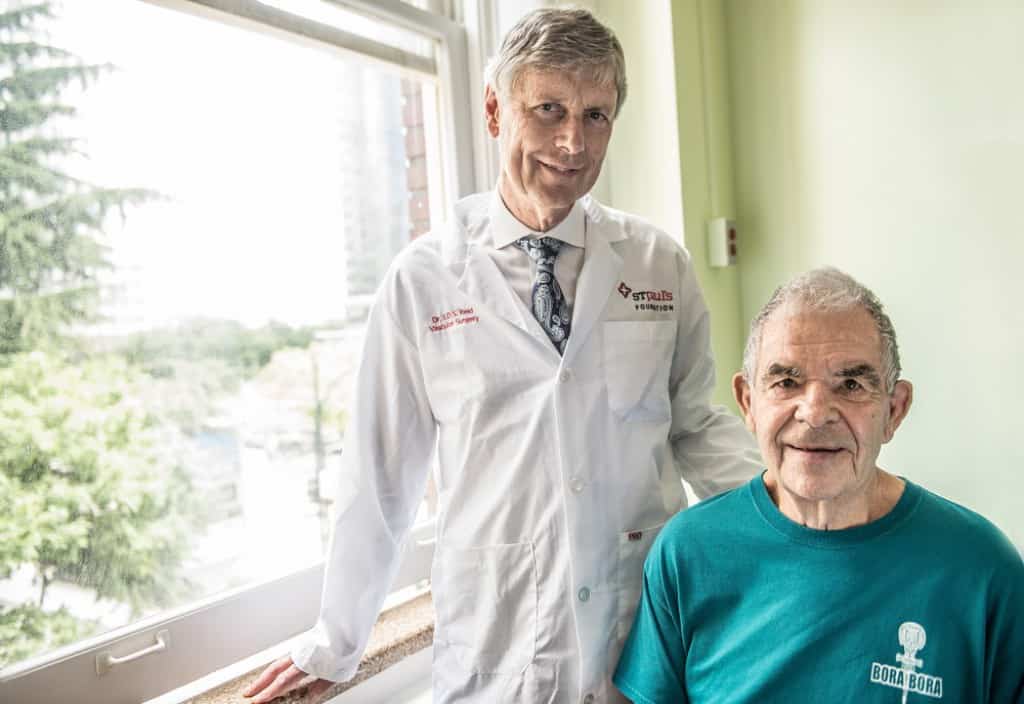Bev Wootton calls herself “everybody’s worst nightmare.” The former nurse is a fierce health advocate for her husband, Barrie, and reels off his medical history like an expert, listing dates and procedures, hospitals, and doctors. But when talking about Barrie’s care at St. Paul’s, her tone softens and she is filled with praise. “These doctors are amazing. They’re so passionate about what they do and always go the extra mile for their patients,” she says.
Barrie, 78, has a long history with St. Paul’s. He first met vascular surgeon Dr. John (Jock) Reid in 1991 when he had a fistula, the joining of an artery and a vein, created in preparation for future dialysis. Barrie remained healthy enough to delay dialysis until 1997. Then in 1999, after almost two years of dialysis, Barrie received a new kidney at St. Paul’s – and a new lease on life.
For years, all was well. Then doctors discovered Barrie had an abdominal aortic aneurysm, a balloon-like swelling of the large artery that goes through the abdomen to the heart. When the aneurysm is small, it’s typically asymptomatic and relatively easy to monitor. But when it’s large, there’s a serious risk it could rupture, causing catastrophic internal bleeding and death. Barrie needed immediate attention.
Conventional surgery to fix Barrie’s aneurysm would involve opening him up from the breast bone to the navel. Doctors would then have to stop the flow of blood while repairing the weakened aorta wall. Dr. Reid explains that this would have serious consequences for someone living with a single transplanted kidney. If they cut off the blood flow, Barrie’s kidney would almost certainly die. Fortunately, Dr. Reid had another option.
He made a small incision in Barrie’s groin, inserted a fabric-covered tube called an endograft, and fed it up through the through the abdomen into the aneurysm. Because the graft fits inside the aneurysm, it doesn’t have to be sewn to the aorta and there’s no need to stop the blood flow.
In addition to repairing Barrie’s aneurysm and saving his kidney, this approach meant a much smaller incision, less pain, reduced risk of surgical site infection, and a faster recovery.
For Dr. Reid, finding patient-centred solutions in even the most complex cases is all in a day’s work. “In the old days,” he says, “we couldn’t reach these areas without major surgery. Now we can, and it’s making such a difference.”
For Barrie and Bev, it’s another new lease on life courtesy of St. Paul’s. As Bev puts it, “Dr. Reid is our superhero.”
With your generous gift, you give Dr. Reid and his colleagues the equipment and training to provide innovative, compassionate care to our patients – people like Barrie and Bev.
